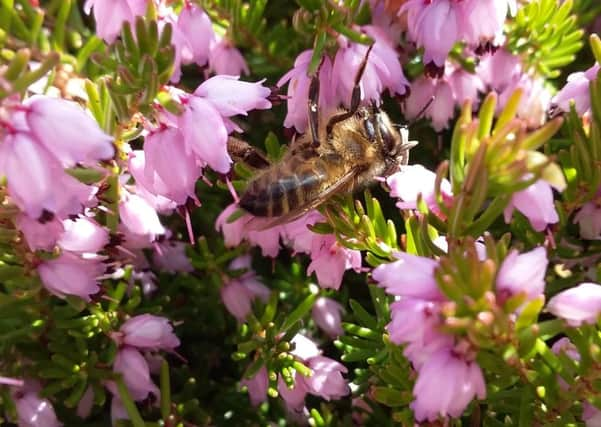Out and about and ready to cast clouts


The gloom has been pierced recently by the buzz of hive bees, apis mellifera, feasting on a dazzling display of winter heathers, however.
This has led to more positive thoughts, such as whether we have still got a good succession of insect-friendly plants in the garden to keep them going until autumn.
Advertisement
Hide AdAdvertisement
Hide AdHave the favourite perennials of butterflies and bees come through winter safely? If not, let’s do something about it now.
My reckoning is that if you can start the year with a ready supply of nectar and pollen on tap, insects will hang around instinctively.
Where bees are involved, it only takes a continuous succession of blooms to make it so.
Butterflies will pop in to inspect what’s on offer if colour is present, but there’s a better chance of maintaining their interest if plants which support the precious life cycle are nearby.
Advertisement
Hide AdAdvertisement
Hide AdIt goes against the grain for gardeners to retain a patch of nettles on site, but that is the main plant chosen for egg-laying and feeding red admiral, small tortoiseshell and peacock larvae.
Annual borage, which self-seeds everywhere in this garden, is a favourite of painted ladies and their hungry larvae. They also breed on achillea, lavatera and thistles if needs be.
When you consider the movement, colour, grace and entertainment these insects bring to a garden, any effort to sustain them is worthwhile.
Providing nesting sites for bees need not be too difficult. You can buy a ready-made box or bumblebee lodge to hang up on a tree or fence, but if something more natural appeals, build a length of drystone wall. Leaving the occasional niche in this offers several options.
Advertisement
Hide AdAdvertisement
Hide AdWallflowers, sempervivum or similar plants can be introduced for seasonal colour. Robins or wrens may choose to nest there, and bumblebees will jump at the chance.
The heather flowers, erica carnea in pink and white, have been around since January, but it was the intensity of bloom and relatively warm early February day that brought a first honeybee sighting.
Calmer days at the beginning of March have literally brought this buzz to the garden. The Lenten roses (hellebores) are fully open alongside assorted groups of bulbs, pulmonaria, anemone and bugle.
There’s more than enough to keep bees going well through the month.
What comes next?
Wallflower blooms are beginning to open, aubrietia is not far from flowering and buds are plumping up on the Victoria plum.